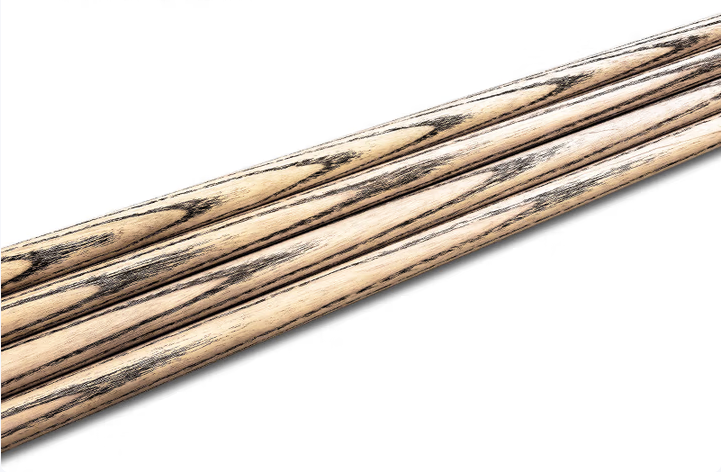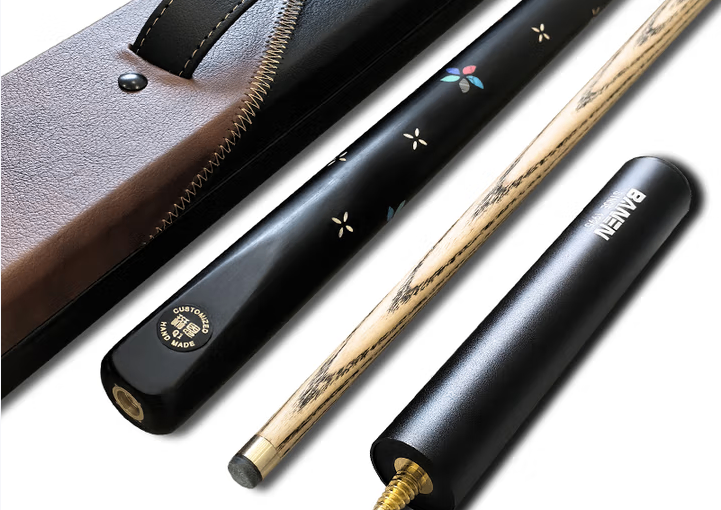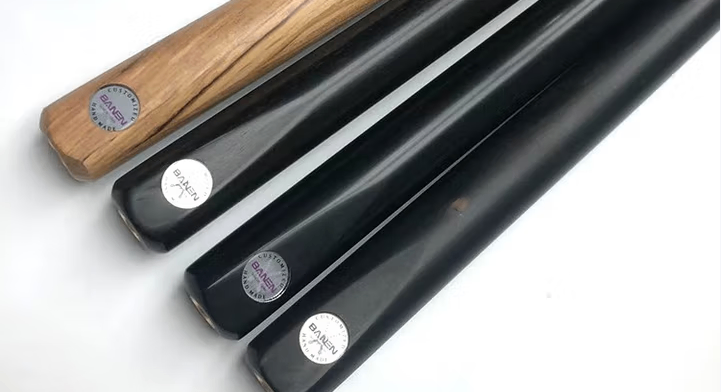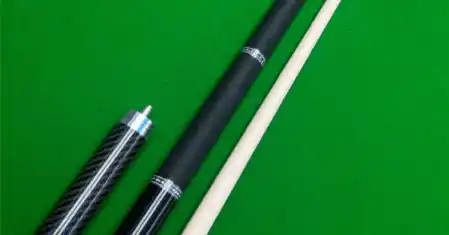When buying a cue, one of the first questions players often ask is: What material should I choose? Different woods (or composites) not only affect the cue’s appearance and durability, but also the feel and feedback during play. For example, ash is the standard for snooker cues, known for its crisp and direct response; maple dominates in pool cues, thanks to its unique compression and rebound qualities; and in recent years, carbon fiber and engineered woods have gained traction, offering stability and consistency. Still, natural woods remain the benchmark in the high-end market.
Below is a breakdown of the main cue materials and their characteristics to help you choose what fits your game best.
Ash
Ash grows mainly in North America and Europe, widely valued as a strong, resilient hardwood. Beyond furniture and flooring, it’s also used in sports gear like baseball bats and skis, thanks to its durability, elasticity, and shock absorption.
In cues, ash is most common in snooker shafts. Its standout trait is direct feedback. Both the power transfer and vibration response are immediate and clear, giving players a strong sense of connection with the cue ball.
This “directness” manifests in two ways:
Immediate return of power through the stroke.
Quick vibration feedback along the shaft.
Together, these create a transparent and precise feel, ideal for players who want to “read” the cue ball instantly.

Maple
Like ash, maple is widespread in North America and Europe. It’s hard, smooth, and fine-grained, often used in flooring, cabinets, instruments, and sports equipment such as baseball bats and skateboards.
In cues, maple dominates the pool scene, while snooker still favors ash. Compared with ash, maple feels less sharp in feedback—some describe it as “muffled” or softer. For players used to ash, switching to maple can feel unfamiliar.
Maple’s unique advantage lies in its compression and rebound. At impact, it slightly stores energy, then releases it with elasticity. This delayed energy release is especially useful in pool, where “pushing through” the shot can maximize cue ball control.
A car suspension analogy helps: ash is like a sport suspension—direct and road-sensitive; maple is like a comfort suspension—softer, more forgiving, but still responsive when pushed.
Engineered Woods
Engineered shafts are made by compressing and laminating multiple layers of hardwood with adhesives under controlled processes. The result is a shaft that is consistent, stable, and less prone to warping or cracking.
Performance-wise, engineered woods feel harder and more uniform than natural woods. They deliver feedback that’s direct but somewhat one-dimensional—lacking the subtle rebound of maple or the delicate transmission of ash.
Their main advantage lies in stability and cost efficiency. For mid-market cues, engineered woods ensure reliable quality. But at the high end, they still can’t match the unique character and nuanced feel of natural premium woods.

Carbon Fiber
Carbon fiber cues first appeared in the late 1990s to early 2000s. They gained attention for being extremely durable and low-maintenance. However, most players still find them lacking compared to maple or ash in terms of “feel.”
Full carbon shafts often feel overly stiff, with less tactile feedback. While carbon fiber is strong and consistent, the lack of subtle vibrations makes many players feel disconnected from the cue ball. This is why carbon is more common in break cues or mid-range products, rather than professional playing cues.
That said, composite materials are advancing much faster than traditional cue-making craft. Once the industry develops better data-driven standards and more players get used to the different feel, carbon fiber may gradually find a stronger role. In the short term, though, it’s unlikely to replace premium natural woods in the high-end market.
The evolution of cue materials has always balanced tradition and innovation. Ash remains the choice for players who want crisp, precise feedback; maple offers a softer, more elastic response ideal for pool; engineered woods provide consistency at a practical price point; and carbon fiber highlights stability and modern engineering.

Ultimately, cue feel is highly subjective. It depends on your playing style, technique, and even personal preference for feedback. Natural woods still dominate the top tier for their complexity and unique character, while synthetic options continue to grow as reliable, standardized alternatives.
Looking ahead, material diversity will likely increase, but for now, high-quality ash and maple remain irreplaceable benchmarks in the world of cues.
